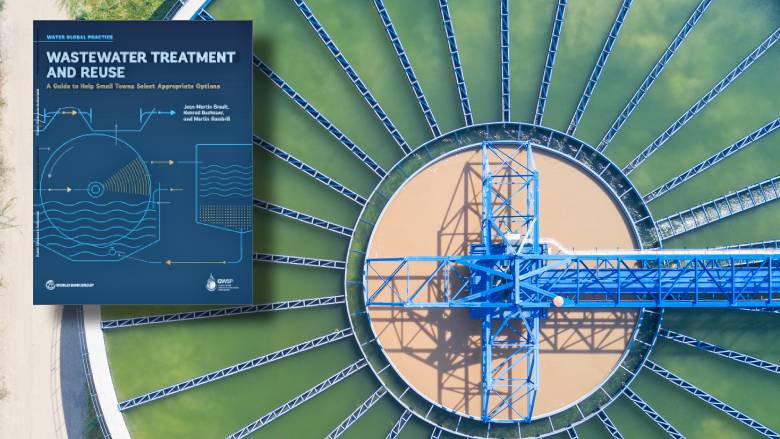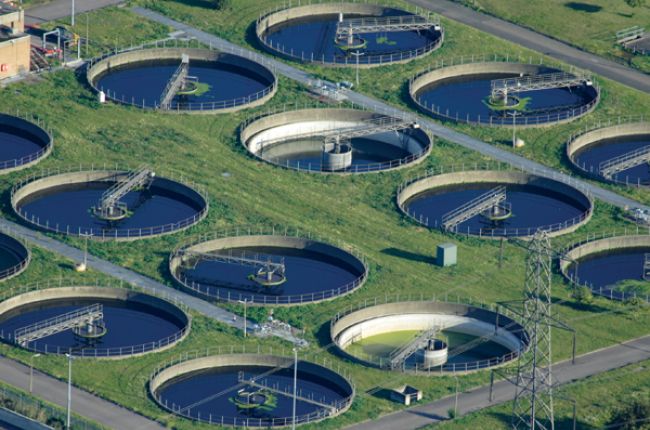Environmental Effect of Waste Water Treatment: What You Need to Know
Wiki Article
Strategic Approaches to Improve Waste Water Therapy Efficiency and Lessen Environmental Influence
In the world of waste water therapy, the mission for boosted performance and lowered environmental impact is a continuous challenge that demands calculated options. As culture grapples with the vital to handle water sources sustainably, a nuanced strategy ends up being essential. The integration of advanced treatment technologies, energy-efficient procedures, resource recovery techniques, improved nutrient removal strategies, and clever surveillance and control systems stands for a diverse structure for resolving these pushing worries. Nevertheless, what exists at the core of this complicated web of techniques is the potential to revolutionize the method we come close to waste water treatment, not equally as a procedure of disposal, but as a beneficial opportunity for innovation and ecological stewardship.Advanced Therapy Technologies
Advanced membrane filtering systems have reinvented innovative wastewater treatment procedures, considerably improving the removal of impurities. This modern technology has actually shown to be extremely effective in eliminating a large array of impurities, including pharmaceuticals, heavy steels, and natural compounds, which are usually testing to remove with typical therapy approaches.Additionally, membrane purification systems use various benefits over standard treatment strategies. Furthermore, these systems are highly functional and can be quickly integrated into existing therapy plants or used as standalone devices for decentralized applications.
Energy-Efficient Procedures
The combination of energy-efficient procedures in wastewater therapy systems is important for maximizing source utilization and minimizing operational costs. One essential technique to boosting power performance in wastewater treatment is the utilization of sophisticated aeration systems, such as fine bubble diffusers or surface area aerators, which can improve oxygen transfer efficiency and decrease energy usage.Additionally, enhancing procedure control and automation through making use of innovative sensing units and monitoring systems can improve general energy effectiveness by changing procedures in real-time based upon real need and problems. Applying power audits and on a regular basis monitoring power efficiency signs are necessary methods to identify areas for renovation and track energy-saving campaigns properly. On the whole, the adoption of energy-efficient procedures in wastewater treatment not only benefits the atmosphere however also contributes to long-term cost savings and functional sustainability.
Source Healing Techniques
With a concentrate on enhancing resource application and sustainability in wastewater therapy systems, the application of resource recovery approaches arises as a critical aspect in boosting operational performance. Source healing techniques in wastewater therapy involve the recognition and removal of important sources from the waste stream, consequently turning what was once thought about waste into a useful asset. By applying resource healing techniques such as nutrient elimination and recovery, power generation from raw material, and the manufacturing of reusable water, wastewater therapy plants can minimize environmental influence while making best use of performance.
Improved Nutrient Removal Techniques
Implementing advanced nutrient elimination methods is important for optimizing the performance of wastewater therapy systems. Boosted nutrient removal plays an important role in minimizing the ecological influence of cured effluent discharged into water bodies. Among the essential methods made use of for boosted nutrient elimination is the process of organic nutrient removal (BNR), which includes the elimination of nitrogen and phosphorus via organic procedures. This can official site be achieved via using specialized microbes that can transform nitrogen compounds into inert nitrogen gas via denitrification, and collect phosphorus within their cells through a procedure called enhanced organic phosphorus removal (EBPR)
In addition to BNR, advanced treatment techniques such as membrane bioreactors (MBRs) and constructed wetlands can also be employed to boost nutrient elimination performance. By including these sophisticated nutrient removal techniques right into wastewater therapy industries, municipalities and systems can efficiently decrease nutrient pollution and shield the atmosphere.
Smart Tracking and Control Solution
Utilizing sophisticated modern technology, the combination of smart surveillance and control systems revolutionizes the functional effectiveness of wastewater treatment centers. These systems incorporate sophisticated sensing units and data analytics to continually keep track of key criteria such as pH levels, turbidity, dissolved oxygen, and flow prices in real-time. By collecting and assessing this data, drivers can obtain useful insights right into the efficiency of the treatment procedures, allowing aggressive changes to This Site enhance therapy effectiveness.Smart surveillance and control systems also sustain remote monitoring capacities, allowing operators to accessibility real-time data and control features from off-site places. This remote accessibility improves functional flexibility and responsiveness, allowing speedy interventions in situation of system breakdowns or fluctuations in influent high quality. The anticipating maintenance capacities of these systems aid avoid devices failings and decrease downtime, inevitably boosting the total reliability of wastewater treatment procedures.
Verdict
In verdict, tactical techniques such as innovative therapy innovations, energy-efficient processes, source healing techniques, enhanced nutrient removal methods, and smart monitoring and control systems play a critical duty in improving wastewater therapy efficiency and lessening ecological effect. By carrying out these strategies, wastewater therapy plants can boost their overall efficiency, lower power intake, recoup useful sources, and make certain conformity with ecological guidelines. These techniques are vital for sustainable and effective wastewater management techniques.
In final thought, critical methods such as sophisticated therapy innovations, energy-efficient processes, resource healing techniques, enhanced nutrient elimination techniques, and wise surveillance and control systems play a vital role in improving wastewater therapy effectiveness and minimizing ecological impact.
Report this wiki page